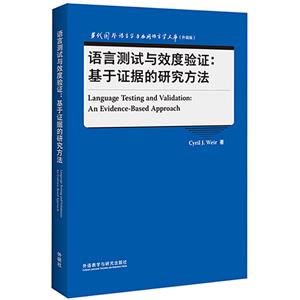
作者:ADOLFO M. GARC·A
页数:316
出版社:外语教学与研究出版社
出版日期:2022
ISBN:9787521339116
电子书格式:pdf/epub/txt
内容简介
译员的大脑真的是“黑匣子”吗?
同传译员是如何“烧脑”的?
单词翻译和句子翻译激活的脑区有何不同?
正向翻译和逆向翻译涉及的脑回路又有何差异? 《口笔译的认知神经科学研究》以认知神经科学研究为轴线,着重探讨了语际转换的神经加工机制与其影响要素,让翻译研究“可视化”,具有创新性,极大地拓展了翻译研究的维度。
作者简介
阿道弗·M. 加西亚(Adolfo M. García):阿根廷库约国立大学教授,著述颇丰,主要研究兴趣为语言的神经科学研究、认知科学、口笔译研究等。
本书特色
“当代国外语言学与应用语言学文库(升级版)”是主要面向高校英语专业高年级本科生、研究生及英语教师的一套大型的、开放性的系列丛书。本升级版或保留原有经典图书品种,或继之以经典图书的新版,或引进国外语言学与应用语言学领域的新锐力作以进一步拓展学科领域,希望它能继续对我国语言学教学与研究和外语教学与研究起到积极的推动作用。
《口笔译的认知神经科学研究》是“当代国外语言学与应用语言学文库(升级版)”中的一本。
本书另辟蹊径,从认知神经科学研究角度切入翻译研究,让翻译研究“可视化”,极大地拓展了翻译研究的维度,值得细读。
目录
Table of contents
Acknowledgments XXIII
Foreword XXV
Notes on previous works XXIX
Introduction Translation, interpreting, and the brain behind it all 1
I. Stepping into the attic 1
II. Why should TIS be concerned with neurocognition? 3
III. Aims and target audience 5
IV. The contents, at a glance 5
V. Conceptual delimitations 7
Chapter 1 Mind and brain in the study of translation and interpreting 11
1.1 Minding the brain, braining the mind 11
1.2 Outside the head: Non-neural cognitive approaches 12
1.3 Within the mind, without the brain: Appraising non-neural cognitive approaches 25
1.4 Not black, not a box: Enter the brain 30
1.5 Historicizing brain-based research on IR 34
1.6 A role for neuroscience in contemporary TIS 39
Chapter 2 The toolkit 41
2.1 Beyond MacGyver’s knife 41
2.2 A matter of design 42
2.3 Mind games: A sampler of experimental paradigms 46
2.4 The craft of manipulation 55
2.5 Do it well, do it fast 58
2.6 System breakdown 59
2.7 The brain, in vivo 60
2.8 How (not) to interpret the data 71
2.9 Final remarks 74
Chapter 3 Prolegomena to the translating and interpreting brain 75
3.1 Laying the groundwork 75
3.2 A primer on neurology 76
3.3 The verbal brain 87
3.4 It takes two to tango: The prerequisite of bilingualism 94
3.5 In a nutshell 97
Chapter 4 Building up from breakdown 99
4.1 Lessons from lesions 99
4.2 Disruptions of IR 101
4.3 Charting the territory 115
4.4 Piecing it all together 123
4.5 Interpretive remarks 128
4.6 From static maps to dynamic pictures 129
Chapter 5 The dynamics of directionality 131
5.1 A sense of direction 131
5.2 Multidimensional signatures of directionality 134
5.3 Back and forth 149
5.4 In the right direction 152
Chapter 6 Process is as unit requires 153
6.1 The process’s raw material 153
6.2 Conceiving translation units 154
6.3 Spatiotemporal correlates of lexical and sentential translation units 157
6.4 Uniting it all 172
6.5 From unitary to unit-sensitive 176
Chapter 7 The interpreter’s brain 177
7.1 The art of self-sculpting 177
7.2 Simultaneous interpreting, or extreme bilingual processing 179
7.3 En route to expertise 181
7.4 Keep the change (and make it broader) 189
7.5 The plastic nature of IR systems 204
Chapter 8 A story in the making 205
8.1 The tale of the attic 205
8.2 Q&A 206
8.3 The good… 209
8.4 … and the bad 211
8.5 Needs assessment 214
8.6 Parting words 218
About the author 221
List of figures and tables 223
List of acronyms and abbreviations 227
References 229
Index 263















